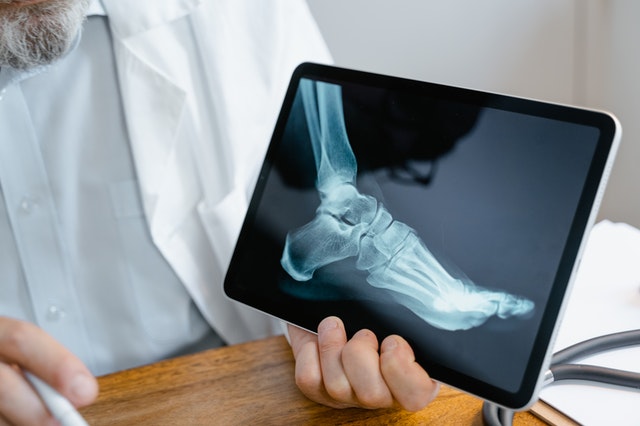Like all organs in the human body, our bones are constantly undergoing remodelling.1 This process is mainly mediated by cells known as osteoclasts and osteoblasts.1 Osteoclasts are responsible for the breakdown of bone while osteoblasts function to build bone by producing key components, particularly hydroxyapatite.1 Up to 70% of bone contains hydroxyapatite, which is a mineral made up of two major components: calcium and phosphorous.1 Unfortunately, when the balance between bone degradation and formation is disrupted, this can lead to bone diseases such as osteoporosis and increase the susceptibility of developing fractures.1 Why does this occur? What causes poor bone health?
Calcium: A building block for bone
As a major constituent of bone, calcium functions to strengthen the skeleton by promoting growth and development.1 Outside of its roles in the musculoskeletal system, it is also important for the contraction of muscles and cellular signalling in the brain.1 Due to all of these critical functions, calcium levels must be closely regulated.1 This task falls to two hormones produced in the brain, namely parathyroid hormone and calcitonin.1 Parathyroid hormone is, as the name suggests, made in the parathyroid gland and functions to increase calcium levels by promoting its release from bone.1 Calcitonin is released from the thyroid gland and works in opposition to parathyroid hormone since it decreases calcium levels.1
Low calcium levels and poor bone health
The effects of calcium on bone health have been widely explored. Research suggests that a deficiency in calcium is linked to a decrease in bone mass.2 This occurs because parathyroid hormone begins to work overtime to raise calcium levels.2 In fact, it has been reported that children (ages 3-15) who have had forearm fractures have lower bone density scores than those who have never broken a bone.3 The incidence of fractures in childhood is also correlated with a decreased intake of calcium, suggesting that low calcium levels can cause poor bone health.
Similarly, calcium is one of the factors linked to poor bone health in the elderly. For the average person, bone mass remains relatively stable up until the age of 50 in men or until menopause hits in women.2 During the first five years after menopause, women lose bone at an alarming rate of 2-3%.2 This decreases to 1% after, which is about the same for elderly men.2 In these high-risk individuals, supplementing diet with calcium has been shown to slow down the loss of bone mass.2 In addition to dairy products, foods that are high in calcium include bony fish, legumes, and some types of nuts.2
Low vitamin D levels and poor bone health
One of the main functions of vitamin D is to regulate the levels of calcium, thereby making it an important factor for the maintenance of healthy bones.4 Vitamin D is required in the body to absorb calcium from the gut so that it can enter the bloodstream.4 Research demonstrates that a vitamin D deficiency is associated with low bone density and an increased risk of suffering from fractures.4
These outcomes can be reversed with vitamin D supplementation.4 In combination with calcium, vitamin D has been shown to significantly decrease the risk of developing hip fractures in elderly women (ages 69-106).5
Low physical activity levels and poor bone health
Besides maintaining healthy levels of calcium and vitamin D in the body, regular exercise can have benefits for bone health.6 In menopausal women (ages 48-60), engaging in physical activity 4 times/week was concluded to offset the loss of bone associated with aging.7 Resistance training is thought to exert the most benefits for bone health due to the mechanical stress it places on the skeleton, which stimulates bone density, mass, and strength.6,7
What can you do to keep your bones healthy?
While many factors can influence bone health, supplementing diet with calcium and vitamin D may help keep bones healthy. However, keep in mind that calcium and vitamin D should be consumed in moderation and depending on your specific needs – speak with your healthcare provider for guidance on diet and supplements. A lack of exercise is also what can cause poor bone health, thus creating a fitness plan focused on resistance training may help strengthen bones and improve overall wellbeing. Please consult your healthcare provider to see how you can keep your bones healthy.
References
1. Vannucci L, Fossi C, Quattrini S, et al. Calcium Intake in bone health: A focus on calcium-rich mineral waters. Nutrients. 2018;10(12):1-12. doi:10.3390/nu10121930
2. Sanders KM, Nowson CA, Kotowicz MA, Kathryn B, Devine A, Reid IR. Calcium and bone health: Position statement for the Australian and New Zealand Bone and Mineral Society, Osteoporosis Australia and the Endocrine Society of Australia. Med J Aust. 2009;190(6):316-320.
3. Goulding A, Cannan R, Williams SM, Gold EJ, Taylor RW, Lewis-Barned NJ. Bone mineral density in girls with forearm fractures. J Bone Miner Res. 1998;13(1):143-148. doi:10.1359/jbmr.1998.13.1.143
4. Lips P, Van Schoor NM. The effect of vitamin D on bone and osteoporosis. Best Pract Res Clin Endocrinol Metab. 2011;25(4):585-591. doi:10.1016/j.beem.2011.05.002
5. Chapuy MC, Arlot ME, Duboeuf F, et al. Vitamin D3 and calcium to prevent hip fractures in elderly women. 1992;326.
6. Hong AR, Kim SW. Effects of resistance exercise on bone health. Endocrinol Metab. 2018;33(4):435-444. doi:10.3803/EnM.2018.33.4.435
7. Kemmler W, Lauber D, Weineck J, Hensen J, Kalender W, Engelke K. Benefits of 2 years of intense exercise on bone density, physical fitness, and blood lipids in early postmenopausal osteopenic women: Results of the Erlangen Fitness Osteoporosis Prevention Study (EFOPS). Arch Intern Med. 2004;164(10):1084-1091. doi:10.1001/archinte.164.10.1084
Photo by Tima Miroshnichenko from Pexels



